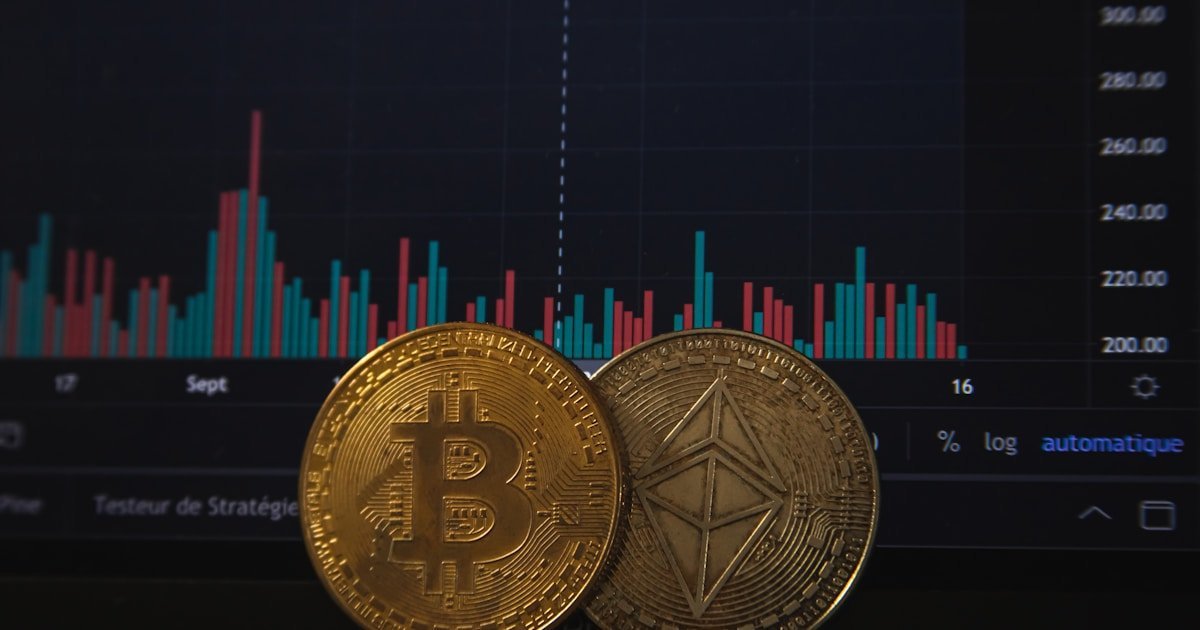Balancer Protocol: Weighted Pools and BAL Token Guide 2025
Complete guide to Balancer Protocol: Weighted Pools with strategies and insights for 2025.
# Balancer Protocol: Weighted Pools and BAL Token Guide 2025
Complete Balancer guide: weighted pools, liquidity bootstrapping, BAL tokenomics, governance, and advanced portfolio management strategies.
## Introduction
Welcome to this comprehensive guide on Balancer protocol in the rapidly evolving DeFi ecosystem of 2025. This article provides in-depth analysis, practical strategies, and expert insights to help you navigate this important aspect of decentralized finance.
## Understanding Balancer Protocol
### Core Fundamentals
The world of Balancer protocol represents a critical component of the modern DeFi landscape. As decentralized finance continues to mature, understanding these concepts becomes essential for both newcomers and experienced practitioners.
### Why This Matters in 2025
The DeFi space has evolved significantly, and Balancer protocol plays an increasingly important role in:
– Enhanced Returns: Optimize your investment strategies and maximize yields
– Risk Management: Implement sophisticated risk mitigation techniques
– Market Efficiency: Contribute to more efficient and liquid markets
– Innovation Adoption: Stay ahead of technological developments
– Strategic Positioning: Position yourself for long-term success in DeFi
## Key Components and Mechanics
### Technical Architecture
The underlying technology powering Balancer protocol leverages cutting-edge blockchain innovations, smart contract automation, and economic incentive mechanisms to create robust, decentralized financial infrastructure.
### Economic Models
Understanding the economic principles behind Balancer protocol is crucial for:
– Evaluating profit potential
– Assessing risk-reward ratios
– Making informed investment decisions
– Timing market entries and exits
## Comparative Analysis
### Market Landscape
The Balancer protocol space includes multiple platforms, protocols, and approaches, each with unique advantages and trade-offs:
| Feature | Approach A | Approach B | Approach C | ||
|---|---|---|---|---|---|
| ——— | ———— | ———— | ———— | ||
| Security | High | Very High | Moderate | ||
| Returns | 8-12% | 15-25% | 5-8% | ||
| Complexity | Low | High | Moderate | ||
| Liquidity | High | Moderate | Very High | ||
| Gas Costs | Low | High | Moderate |
### Platform Comparison
Leading platforms in the Balancer protocol space each offer different features, fee structures, and user experiences. Choosing the right platform depends on your specific needs, experience level, and risk tolerance.
## Implementation Strategy
### Step-by-Step Guide
Phase 1: Preparation
1. Research and Education: Thoroughly understand the concepts and risks
2. Wallet Setup: Ensure you have a secure, compatible wallet
3. Initial Funding: Allocate appropriate capital for your strategy
4. Risk Assessment: Evaluate your risk tolerance and investment goals
Phase 2: Getting Started
1. Platform Selection: Choose reputable, audited platforms
2. Small Scale Testing: Start with minimal amounts to learn
3. Strategy Implementation: Execute your chosen approach systematically
4. Performance Monitoring: Track results and adjust as needed
Phase 3: Optimization
1. Strategy Refinement: Improve based on experience and results
2. Portfolio Expansion: Gradually increase exposure as comfort grows
3. Advanced Techniques: Implement more sophisticated strategies
4. Continuous Learning: Stay updated with new developments
### Best Practices
Security First
– Always use hardware wallets for significant amounts
– Verify all smart contract addresses before interacting
– Keep private keys secure and backed up properly
– Use reputable, audited protocols only
Risk Management
– Never invest more than you can afford to lose
– Diversify across multiple protocols and strategies
– Set clear entry and exit criteria
– Maintain emergency funds for unexpected opportunities
Operational Excellence
– Keep detailed records for tax and analysis purposes
– Monitor positions regularly for changes or risks
– Stay informed about protocol updates and changes
– Participate in community discussions and governance
## Advanced Strategies and Techniques
### Professional Approaches
Experienced practitioners often employ sophisticated strategies that combine multiple protocols, timing mechanisms, and risk management techniques to optimize returns while minimizing exposure.
### Automation and Tools
Modern DeFi offers numerous tools for automation, analytics, and optimization:
Portfolio Management
– Automated rebalancing protocols
– Yield optimization strategies
– Risk monitoring systems
– Performance analytics platforms
Trading and Execution
– DEX aggregators for optimal pricing
– Limit order protocols for precise execution
– MEV protection for safer transactions
– Gas optimization tools for cost efficiency
## Risk Assessment and Mitigation
### Primary Risk Categories
Smart Contract Risk
– Protocol vulnerabilities and bugs
– Upgrade risks and governance decisions
– Oracle failures and data manipulation
– Liquidation and slashing mechanisms
Market Risk
– Price volatility and correlation
– Liquidity crunches and bank runs
– Regulatory changes and compliance
– Technological obsolescence
Operational Risk
– User error and wallet security
– Key management and recovery
– Platform availability and uptime
– Customer support and dispute resolution
### Mitigation Strategies
Diversification Approaches
– Spread risk across multiple protocols
– Use different blockchain networks
– Employ various strategy types
– Maintain cash reserves for opportunities
Insurance and Protection
– DeFi insurance protocols coverage
– Self-insurance through position sizing
– Hedging strategies using derivatives
– Emergency exit procedures
## Tools and Resources
### Essential Platforms
Analytics and Tracking
– DeFiPulse: TVL and protocol analytics
– DeFiLlama: Comprehensive DeFi data
– Zapper: Portfolio management and tracking
– DeBank: Multi-chain portfolio overview
Trading and Execution
– 1inch: DEX aggregation and optimization
– Paraswap: Advanced trading features
– Matcha: Professional trading interface
– CowSwap: MEV protection and efficiency
Research and Education
– DeFi Safety: Security audits and ratings
– Messari: In-depth protocol research
– Token Terminal: Financial metrics and analysis
– The Block: News and market intelligence
### Community Resources
– Discord communities for real-time discussion
– Twitter for news and alpha sharing
– Reddit for detailed analysis and debate
– YouTube for educational content and tutorials
## Market Trends and Future Outlook
### Current Developments
The Balancer protocol space is experiencing rapid innovation across multiple dimensions:
Technological Advancements
– Layer 2 scaling solutions reducing costs
– Cross-chain bridges enabling interoperability
– Account abstraction improving user experience
– MEV protection enhancing transaction fairness
Market Evolution
– Institutional adoption driving growth
– Regulatory clarity improving confidence
– Integration with traditional finance
– Enhanced security and risk management
### Future Predictions
Looking ahead, several trends are likely to shape the evolution of Balancer protocol:
Short Term (2025-2026)
– Continued growth in TVL and user adoption
– Improved user interfaces and experiences
– Enhanced security and risk management tools
– Greater regulatory clarity and compliance
Medium Term (2026-2028)
– Mainstream financial institution integration
– Advanced automation and AI-driven strategies
– Cross-chain functionality becoming standard
– Institutional-grade infrastructure development
Long Term (2028+)
– Full integration with traditional financial systems
– AI-powered portfolio management and optimization
– Quantum-resistant security implementations
– Global regulatory standardization
## Practical Examples and Case Studies
### Success Stories
Real-world examples demonstrate the potential of well-executed Balancer protocol strategies:
Case Study 1: Conservative Approach
– Strategy: Stable yield farming with blue-chip protocols
– Duration: 12 months
– Results: 8.5% APY with minimal risk exposure
– Key Learning: Consistent execution beats complexity
Case Study 2: Active Management
– Strategy: Dynamic allocation across multiple opportunities
– Duration: 6 months
– Results: 23% returns through active optimization
– Key Learning: Market timing and flexibility crucial
Case Study 3: Risk Management Focus
– Strategy: Diversified approach with insurance coverage
– Duration: 18 months
– Results: 12% APY with downside protection
– Key Learning: Risk management enables sustainable growth
### Common Mistakes and Lessons
Beginner Errors
– Rushing into complex strategies without understanding
– Neglecting security in favor of convenience
– Failing to diversify across protocols and chains
– Ignoring gas costs and fee optimization
Lessons Learned
– Start small and learn incrementally
– Security should always be the top priority
– Diversification is essential for long-term success
– Continuous education and adaptation are required
## Regulatory Considerations
### Current Landscape
The regulatory environment for Balancer protocol continues to evolve, with different jurisdictions taking varying approaches to DeFi oversight and compliance.
### Compliance Best Practices
– Maintain detailed transaction records
– Understand tax implications in your jurisdiction
– Consider regulatory changes in strategic planning
– Consult with crypto-aware legal and tax professionals
### Future Outlook
Regulatory clarity is improving globally, which should provide greater confidence and institutional adoption opportunities while potentially introducing new compliance requirements.
## Getting Started Checklist
### Before You Begin
– [ ] Complete thorough research and education
– [ ] Set up secure wallet infrastructure
– [ ] Define clear investment goals and risk tolerance
– [ ] Allocate appropriate capital for DeFi activities
– [ ] Establish record-keeping and tax procedures
### Initial Implementation
– [ ] Choose reputable, audited platforms
– [ ] Start with small amounts to learn and test
– [ ] Implement basic security practices
– [ ] Begin with simpler strategies before advancing
– [ ] Join relevant communities for ongoing education
### Ongoing Management
– [ ] Monitor positions and performance regularly
– [ ] Stay updated on protocol changes and developments
– [ ] Continuously educate yourself on new opportunities
– [ ] Refine strategies based on experience and results
– [ ] Maintain strong security practices and procedures
## Conclusion
Balancer Protocol represents a significant opportunity in the evolving DeFi landscape of 2025. Success requires thorough understanding, careful planning, disciplined execution, and continuous learning.
The key to success lies in balancing opportunity with risk management, staying informed about developments, and maintaining a long-term perspective while adapting to changing market conditions.
As the DeFi ecosystem continues to mature, those who invest time in understanding these concepts and implementing sound strategies will be well-positioned to benefit from the ongoing evolution of decentralized finance.
Ready to get started? Begin with thorough research, start small to learn the systems, and gradually build your expertise and exposure as you gain confidence and experience.
### Essential Next Steps
1. Deepen Your Knowledge: Continue learning about DeFi concepts and strategies
2. Start Practicing: Begin with small amounts on reputable platforms
3. Join Communities: Connect with other practitioners for insights and support
4. Stay Updated: Follow developments in the rapidly evolving DeFi space
5. Build Gradually: Increase involvement as your knowledge and confidence grow
### Related DeFi Articles
– Understanding DeFi Basics – Foundation knowledge for beginners
– DeFi Security Best Practices – Protect your investments
– Advanced DeFi Strategies – Take your approach to the next level
– DeFi Market Analysis – Stay informed about trends and opportunities
—
*This article is for educational purposes only and does not constitute financial advice. Always do your own research and consider consulting with qualified professionals before making investment decisions.*
Additional Resources
Related DeFi Guides
- What is a DEX? Complete Guide
- DEX Security: Protecting Your Funds
- DEX Yield Farming Strategies
- Cross-Chain DEX Trading Guide
- Layer 2 DEX Complete Guide
- Aave: Lending & Borrowing Guide
- Understanding Impermanent Loss








